If you trying to upgrade to Windows 11/10 or upgrading to a new update from Microsoft, then there may be occasions where the installation may fail leaving you with error 0x800704B8 – 0x3001A. Microsoft states specific upgrade error codes that start with the digits 0x800 imply general operating system errors. These are not unique to the Windows upgrade process. A few examples include devices not functioning, timeouts, devices not functioning, and a process stopping unexpectedly.
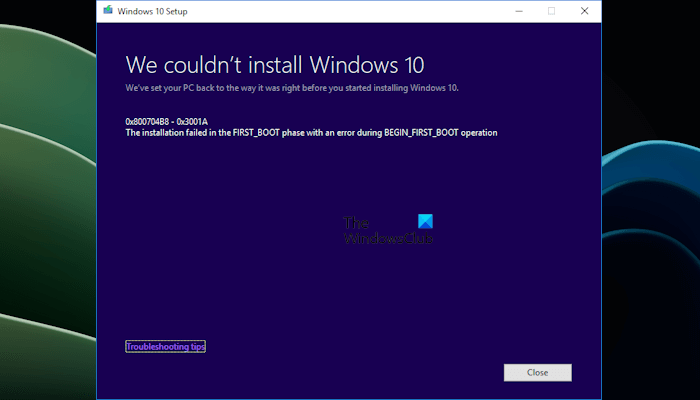
Windows Boot goes through multiple phases which makes sure that your computer is not compromised. If you get a Windows Update Error Code 0x800704B8 – 0x3001A, it means that there is an extended error has occurred during the first boot phase.
If your upgrade process on Windows failed with an error message stating:
Error 0x800704B8 – 0x3001A
The installation failed in the FIRST_BOOT phase with an error during BEGIN_FIRST_BOOT operation.
In this case, use our troubleshooting guide to quickly fix it.
Windows Update error code 0x800704B8 – 0x3001A
Let us understand how to fix the installation failed in the first boot phase error with the help of the below-mentioned solutions.
- Check your disk space
- Disable/uninstall third-party antivirus applications
- Disconnect all external hardware
- Perform a clean boot and then try
- Search in Log files.
Let’s look at all these solutions in more detail.
1] Check your disk space
If you are trying to install Windows in a drive having low disk space, the installation will fail. We must check the free disk space on your hard drive before carrying out the Windows upgrade. There should be a minimum of 30 GB of free space available on your system.
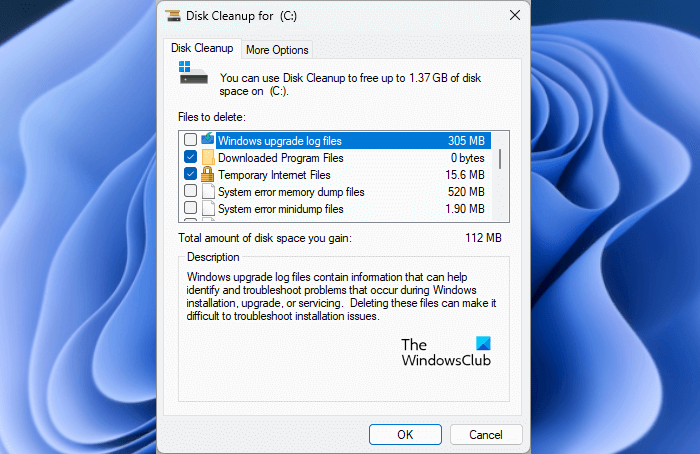
You can check the free disk space on your system by following the below steps:
- Press ‘Win + E’ keys to open the File Explorer window.
- On the left pane, click on This PC.
- You can now look at the drive you wish to install/upgrade Windows 11/10.
If the drive has a minimum of 30 GB of free space, then it is safe to begin the installation. If the drive is running low in space, you will need to free up some space by deleting or moving some folders.
2] Disable/Uninstall third-party antivirus applications
A third-party antivirus software application can be the cause of the error 800704B8 – 0x3001A that you are facing during the installation/upgrade of Windows on your computer system. You should try temporarily disabling the application or completely uninstalling the software. Sometimes, third-party security software may interfere in the process and may cause this error.
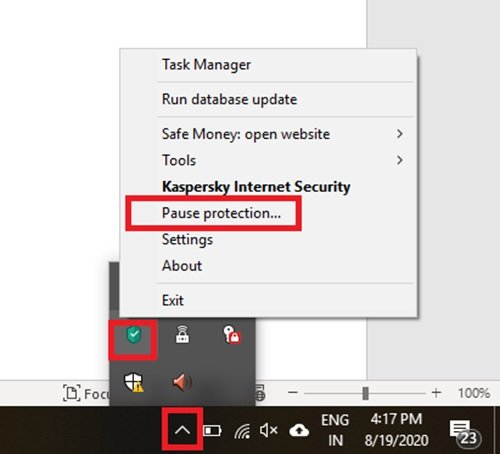
You can follow these steps:
- Right-click on the Third-Party Antivirus Program icon from the system tray.
- From the context menu options, select ‘Disable’ or ‘Pause Protection’.
- Now select the time frame for which you want the Antivirus to remain disabled.
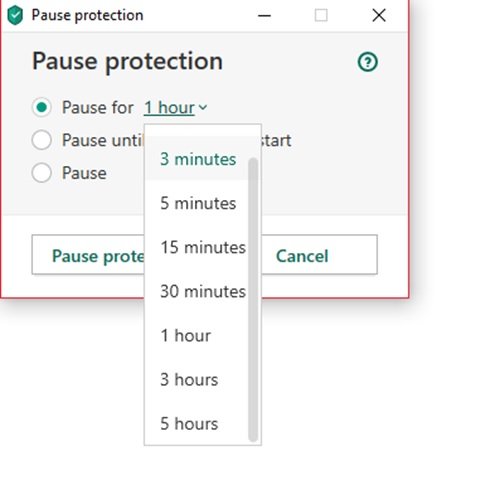
Once successfully disabled, try to carry out the installation process once again and see if the error resolves or not.
3] Disconnect all external hardware
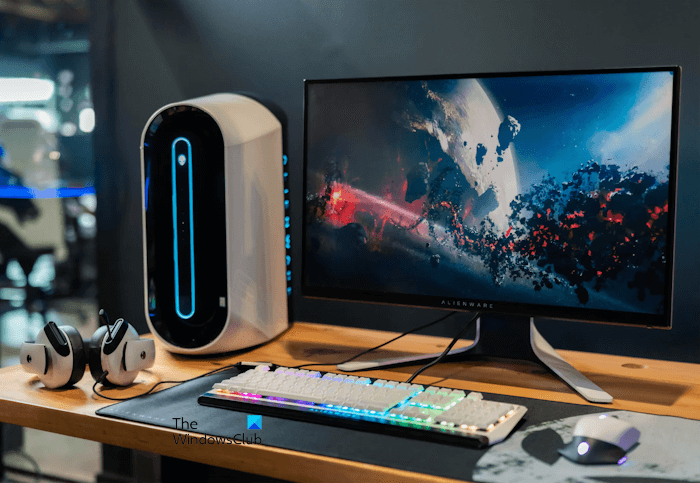
To resolve the error try disconnecting all unnecessary external devices that are connected to your system. Please note this does not include your mouse, keyboard, and display as these are essential for the system.
4] Perform a clean boot
There might be some third-party background application or third-party service interfering with Windows Update, hence, causing it to fail. In such types of cases, you can try running Windows Update in a Clean Boot state. If this is the case with you, Windows Update should be installed successfully in the Clean Boot state. Start your computer in Clean Boot and run Windows Update there. After successful installation of Windows Update, you can exit the Clean Boot state.
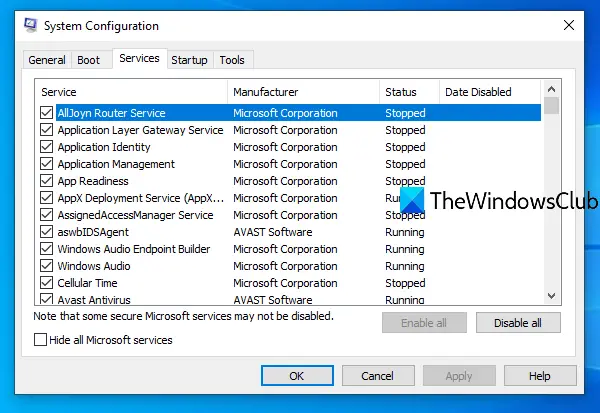
Use the following steps to perform a clean boot in Windows 11/10.
- You will first need to sign into the system as an administrator.
- Now, type ‘msconfig’ in the search box on the taskbar and select System Configuration from the search results.
- In the ‘System Configuration’ window, click on the ‘Services’ tab, and select ‘Hide all Microsoft services.’
- Once selected hit ‘Disable all’.
- Now click on the ‘Startup’ tab of System Configuration window and select ‘Open Task Manager’.
- Once the ‘Task Manager’ window opens, click on every startup item, and then select ‘Disable’.
- Now, close the ‘Task Manager’ and select ‘OK’ on the ‘Startup’ tab of ‘System Configuration’.
Note – If you do not have an administrator account, you will have to create one. Use this guide to create an admin account.
Now when you restart your system, it is in a clean boot state. Now try and see if you meet with success.
5] Search in Log files
Here is another thing you can do, look for Setup Error log files which might be named “xxxxxxx_APPRAISER_HumanReadable.xml, setuperr.log and setupact.log”
Search in those logs if there are instances of anything related to disk space. It may be similar to “DISKSPACEQUERY: Final disk space needed estimate”.
If that’s the case, the update needs more space on your hard drive to complete the installation.
That all! We hope you have successfully fixed error 800704B8 – 0x3001A.
What is the error code 0x80070308 on Windows Update?
The error 0x80070308 is a Windows Update error that occurs while installing Cumulative Update on a Windows computer. There can be many causes of this error, like corrupted system image files, corrupt Windows Update Components, etc. If you cannot install Windows Update on your system due to this error, you can try some fixes like, running the Windows Update Troubleshooter, repairing the system image files by using the SFC and DISM tools, resetting the Windows Update Components, etc. You can also visit the Microsoft Update Catalog and download the update package from there. Now, you can install the Windows Update manually. To download the Windows Update from the Microsoft Update Catalog, you should know the KB number of the failed Windows Update.
What is the error code 0x80070008 on Windows Update?
The error code 0x80070008 is a Windows Update error. When this error occurs, you will see the following message:
0x80070008 – ERROR_NOT_ENOUGH_MEMORY, The system is out of memory.
The error message while installing the Windows Update indicates that your computer does not have enough memory to install the Windows Update. To fix this error, you can run the Disk Cleanup tool to free up space, run Windows Update Troubleshooter, etc. You can also download Windows Update from the Microsoft Update Catalog and install it manually.
Related errors:
- The installation failed in the FIRST_BOOT phase with an error during MIGRATE_DATA operation
- The installation failed in the FIRST_BOOT phase Error 0x800707E7 – 0x3000D
- The installation failed in the FIRST_BOOT phase with an error during SYSPREP operation
- The installation failed with an error during MIGRATE_DATA operation, Error Code 0x80070004 – 0x3000D.
Leave a Reply